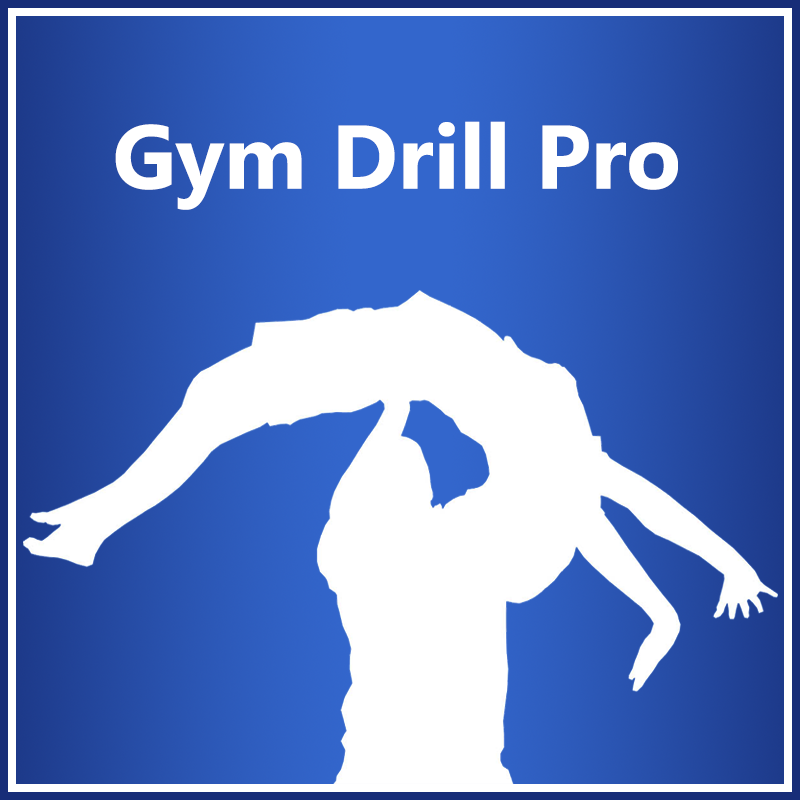

An integral part of the gymnastics coaching process is to provide athletes with drills to aid in their skill development. Drills can help gymnasts learn skills faster, and with the correct techniques. Gym Drill Pro aims to provide qualified coaches with a variety of teaching methods which they can introduce in their own training programs. On Gym Drill Pro you can find hundreds of detailed descriptions and accompanying images for every skill progression. This website is explicitly intended to support qualified coaches in their daily coaching processes. DO NOT practice any of these drills without the guidance of proper professionals.
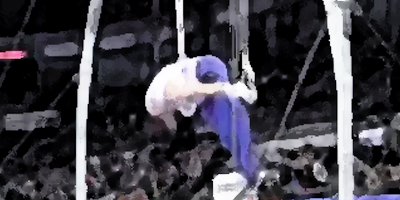
The Jonasson skill is a modification of a Yamawaki on rings, but with tight legs in a piked position. The skill starts with a strong heel drive during the backswing. The legs should reach vertical, the head should be open with the eyes looking at the ground. The arms should be open, similar to an inlocate. Then the gymnast should shift into a kip move. When the body reaches support, the arms provide pressure on the rings in order to perform a forward piked roll to a hanging position. A successive back swing follows. All of the skill should be performed smoothly, the impression should be that the gymnast performs a double front piked flip, holding onto the rings.
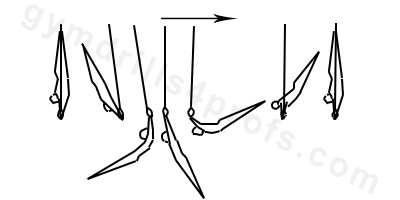
The gymnast should start in a properly executed ring handstand. The gymnast should begin the bail by leaning their heels forward, away from the vertical. They should then push the rings in the opposite direction while maintaining straight arms. They should keep tension on the rings to avoid having a shoulder angle. This will keep the bail long and allow for a higher backswing. Having a hollow body will help the gymnast maintain this pressure on the rings. The gymnast should keep this hollow body throughout the first portion of the bail, this will ensure a smoother swing. The gymnast should then have a strong heel drive and pressure on the rings as they raise their body in the backswing. The gymnast can either keep their arms parallel or widen them as they raise their body to the handstand position. Before attempting this skill, the gymnast should have a strong handstand, swing, and ideally be able to perform inlocates at ring height or higher. Meeting these criteria first will make the front giant much easier.
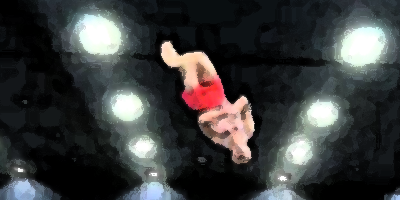
This skill starts from the snap down of the previous skill, usually a back handspring. There should be a strong drive, with an arch from the body and a turning motion from the leading hip. The body and the hips should be upright, before the vertical. If the body leans back from the hips in vertical and behind, the flipping part becomes long and low. The gymnast will not transform the horizontal speed into the height. That's why the hips at the moment of the bounce should be before the vertical position. The turned leading hip gives direction to the full twist. There are two ways of twisting in the flight, so-called “Tsukahara”. The first is to perform the full twist during the first flip (full-in-back-out). The other method is to have each flip contain a half twist (half-in-half-out). There is also another slightly less common way of performing the full twist. This method involves containing the entire twist to the second flip (back-in-full-out). In this case, the gymnast should not turn their leading hip during the bounce.
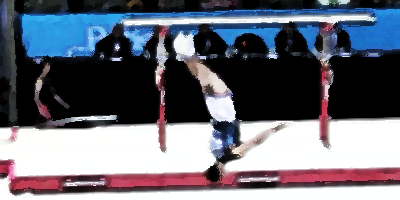
For the double back layout, the technique of the bounce is very important. The skill should be initiated from the snap down phase of the back handspring with an extremely strong back arm swing to a full body extension, with a tight upper back and shoulder arch. Compared to the tempo salto, the hips should be before the vertical axis, which will help give the flip some height. If the hips are at the vertical axis or behind, then the performance will long and low, the speed will not be transformed into the height. If the bouncing is correctly executed, the second layout should be higher than the first one.
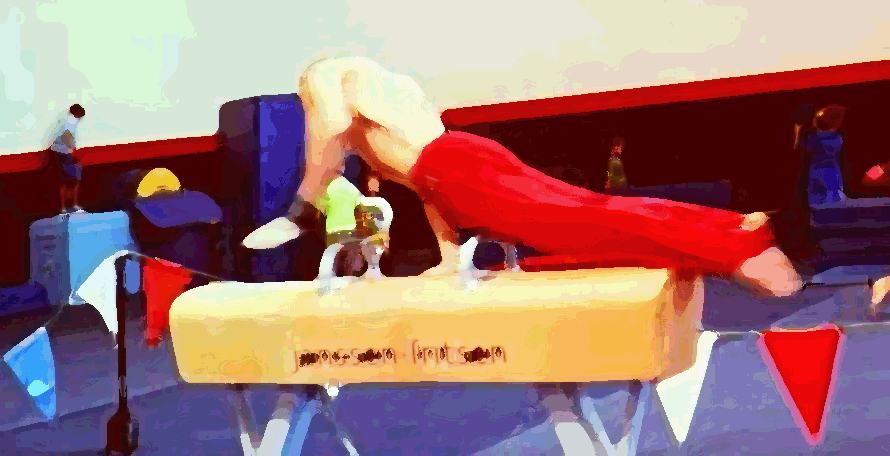
The Wo skill is technically a travel from one end of the horse to the other, with two Russians in between. The skill starts in front loops and finishes with back loops. The roth skill is basically one Russian circle , incorporated into the full travel. Both skills are performed without placing the hands onto the pommels. The Wo skill starts with a stokli placement of the hands in between the pommels. The Russian circle continues with the placement of the hands on the saddle until the first Russian circle finishes in front support longitudinal with the hands in the middle of the horse. The second Russian continues with a quarter turn stokli, and placement of the hands at the end of the horse, passing the second pommel. The second Russian circle continues and finishes in front support, ready for a back loop. The roth move is easier, in the sense that the gymnast should incorporate only one Russian, basically performed in the middle of the horse between the pommels. One modification of this skill is to perform the skill with the stokli between the pommels. A similar move is to have the second stokli on the second pommel. The tong fei skill is similar to the technique mentioned above. The gymnast performs the travel with half of a Russian circle, the quarter stokli though is done over both pommels, at the end of the horse. The skill finishes in front support, ready for the front loop. In all of these skills the gymnast should follow the technical rules of the Russian circle – the center of gravity (hips) should be between the arms, the gymnast should lean forward with the shoulders, squeeze their glutei and push the horse away (“planche move”).